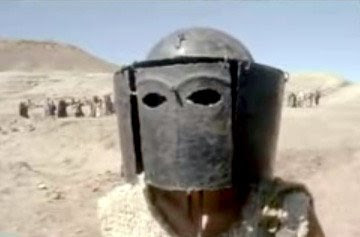
Tuesday, 31 March 2009
Sunday, 22 March 2009
Reader on a roadside verge, amidst heavy traffic

This is one of the 16 pinhole portraits I made on the streets of Liverpool, during the Summer and Autumn of 2006. The portraits, which explored individuals' responses to their feelings of citizenship and place, were made in response to a Mercy organisation commission 'Going Native' and were exhibited at The Arena Gallery, Duke Street, as part of the Liverpool Independents Biennial of 2006.
The text provided by Peter to accompany this image reads:
'When Sean proposed photographing me with St George’s Hall as a backdrop, the inclusion of this neo-classical building made me think of the book I was then reading; Virgil’s Aeneid. This book, the bane of public school boys’ Latin lessons, is in fact an exciting tale of the fall of Troy and the subsequent events leading to the founding of Rome. What a perfect metaphor I thought, for the contemporary invasion of Liverpool! As others who endured the scrutiny of Sean’s long pinhole exposures will know, the three to five minutes seemed to pass quite quickly and such a lengthy exposure usually excludes the recording of moving traffic and passers-by. However, on the day of the sitting, heavy traffic resulted in a white van dominating the middle ground in front of the hall. Sean was a little dismayed by the inclusion of this artefact, but I reassured him that; to me this spoke of the triumph of ‘white van man’ and his cultural dominance over the city’s classical past. What may have been a portrait pastiche; a momento mori of a nineteenth century grand tour, is instead located in a contemporary milieu, where the van bearing the legend “Enterprise” is at least as large, and seemingly important as our classical heritage'.
Sean
Sunday, 15 March 2009
Reader at the top of a mountain
The medieval myth in Rome about Virgil's power as a magician includes the idea of a tower with mirrors for surveying all the events taking place in the far flung provinces of empire. Apparently the great epic poem by Virgil, the Aeneid, was itself used as an oracle:
The Sortes Virgilianae or Sortes Vergilianae (Latin - Virgilian lots; singular - sors Vergiliana) is a form of divination by bibliomancy in which advice or predictions of the future are sought by randomly selecting a passage from Virgil's Aeneid. It was most widely practiced in the later Roman Empire and in medieval times.
Bibliomancy is the use of books in divination. The method of employing sacred books (especially specific words and verses) for 'magical medicine', for removing negative entities, or for divination is widespread in many religions of the world:
It also reminds me of a story that Petrarch writes about in a letter. Francesco Petrarca (July 20, 1304 – July 19, 1374), known in English as Petrarch, was an Italian scholar, poet and one of the earliest Renaissance humanists. Petrarch is often popularly called the "Father of Humanism".
There are several types of divination that can be categorized under the term "aeromancy": Austromancy, divination by observing the wind. austromancy is Anemoscopy in which the wind direction and intensity is interpreted, whereas nephomancy is divination by the interpretation of the movement of clouds. Ceraunoscopy, divination by the interpretation of thunder and lightning. Chaomancy, divination by aerial visions, is nearly synonymous with aeromancy, but most often refers to nephomancy or cometomancy, divination by the appearance of comet tails. Meteormancy, divination by meteors and shooting stars.
Today I ascended the highest mountain in this region, which, not without cause, they call the Windy Peak. Nothing but the desire to see its conspicuous height was the reason for this undertaking. . . . For many years I have been intending to make this expedition. . . . I was at last seized by the impulse to accomplish what i had always wanted to do. It happened while I was reading Roman history again in Livy that I hit upon the passage where Philip, King of the Macedon - the Philip who waged war against the Roman people - "ascends Mount Haemus in Thessaly, since he believed the rumor that you can see two seas from its top: the Adriatic and the Black Sea'. . . . Livy supposes the rumor to be false. I would not leave it long in doubt if that mountain were as easy to explore as the one here. . . . one could see most distinctly the mountains of the province of Lyons to the right and, to the left, the sea near Marseilles as well as the waves that break against Aigues Mortes, although it takes several days to travel to this city. The Rhone River was directly under our eyes. . . .
[Petrarch opens Augustine's Confessions at random] Where I fixed my eyes first, it was written: 'And men go to admire the high mountains, the vast floods of the sea, the huge streams of the rivers, the circumferance of the ocean, and the revolutions of the stars - and desert themselves.'
I was stunned, I confess. I bade my brother, who wanted to hear more, not to molest me, and closed the book, angry with myself that I still admired earthly things. Long since I ought to have learned, even from pagan philosophers, that 'nothing is admirable besides the mind; compared to its greatness nothing is great'.
PETRARCH

Steel towers with mirrors by Louise Bourgeois at Tate Modern
Posted by Philip Courtenay
Saturday, 14 March 2009
Friday, 13 March 2009
Victoria monument/ancient site
Thursday, 12 March 2009
Wednesday, 11 March 2009
Climate for Change: at FACT, Liverpool
Maintaining national stability
Tuesday, 10 March 2009
Sunday, 1 March 2009
Garden sculpture installation
+98.jpg)


+90.jpg)




.jpg)
+92.jpg)
+83.jpg)
+Fuji.jpg)



+83.jpg)
